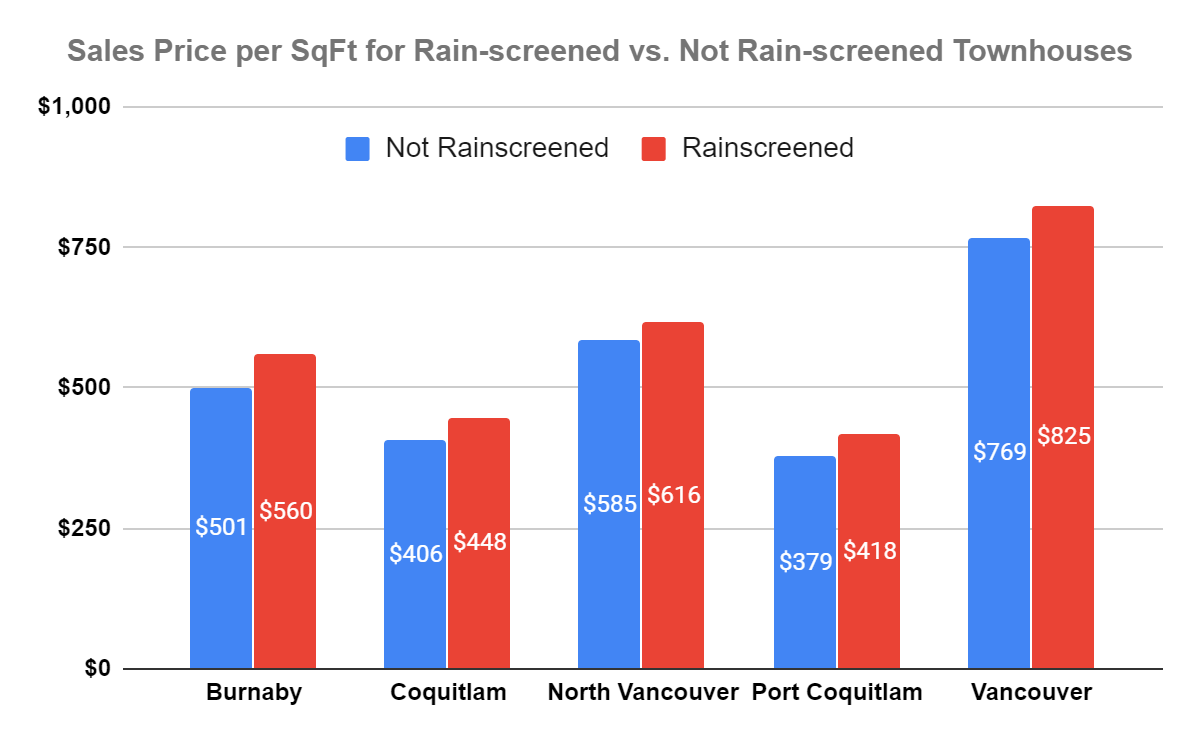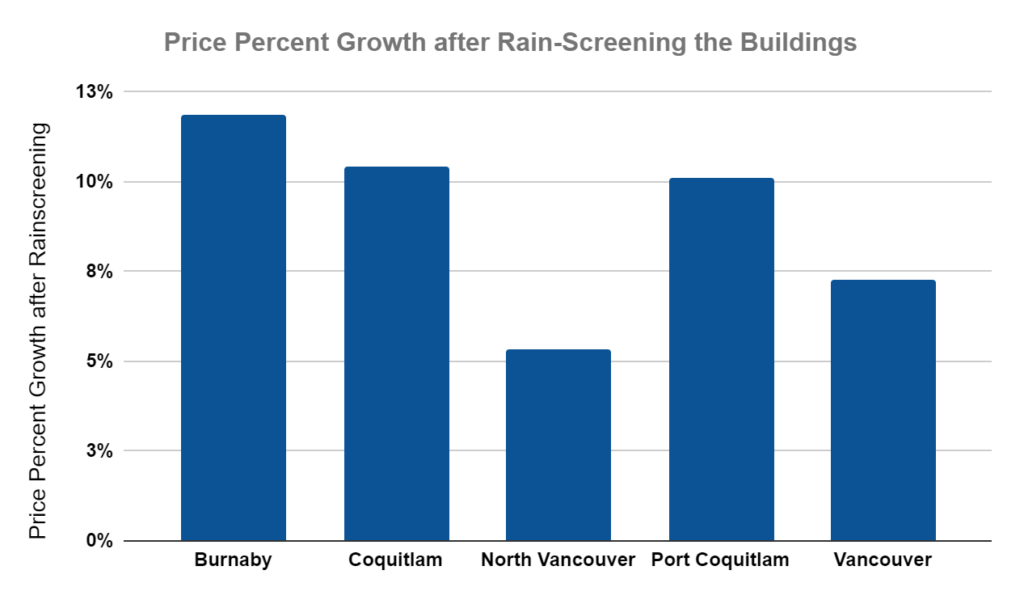More than 72 thousand Metro Vancouver condos built between 1980-2000 suffered from leaky condo syndrome. An oversight in the design and construction of these homes led to the water damage caused by exposure to heavy rain. It would be fair to say it rains a lot in Vancouver, at times, heavily.
The damage cost individual condo-owners tens of thousands of dollars. The crisis as a whole Ied to a revamping of BC building standards in 1999; it also led to the practice of “rainscreening” homes.
A report by Roomvu Marketing—a Vancouver real estate data analytics—examined the effect rainscreening had, per square foot, on townhomes sold in the last three years built between 1980-2000. They look at data from five Metro Vancouver municipalities and compared the prices of rainscreened homes versus non-rainscreened homes.


The median sale price of rainscreened townhomes in the report was around $825 per square foot. Townhomes that weren’t rainscreened sold for almost 7 per cent less at $769 per square foot. In other words, sellers of rainscreened homes examined in the report could have charged an additional $55 per square foot when compared to a townhome of the same age.
It’s important to note that there can be a tonne of variance in price from home-to-home—the values in the report simply represent the average. What’s more, the difference in price among townhouses examined in the report can be explained partly by the style of a townhouse complex in which the home is situated.
Lower-density complexes featuring amenities like common areas and green spaces generally have larger units. Rainscreening larger homes increases the cost per unit, which is an obvious disincentive.
On the other hand, large, dense complexes with fewer amenities often contain smaller units that are more likely to be rainscreened. The average floor size of the townhouses examined in the report is shown here. Considering the average floor area of rainscreened townhouses (1175 SqFt) in 5 cities and knowing the average price of rainscreened and not rainscreened homes, it can be concluded that townhomes being rainscreened are sold in about $65,000 more compared to the not rainscreened ones.
| Not Rainscreened | Rainscreened | |
| Burnaby | 1560 SqFt | 1090 SqFt |
| Coquitlam | 1760 SqFt | 1200 SqFt |
| North Vancouver | 1740 SqFt | 1420 SqFt |
| Port Coquitlam | 1750 SqFt | 1360 SqFt |
| Vancouver | 1350 SqFt | 1140 SqFt |
| Average | 1583 SqFt | 1175 SqFt |
Stories of the fallout from the leaky condo were dime a dozen during the crisis. It wasn’t uncommon for homeowners having to pay $30-150 thousand dollars or more to repair a problem that was foisted on them due to other people’s incompetence. Being out this kind of money would be understandably disastrous to the average homeowner.
Since then, changes have been made and regulations strengthened to hopefully avoid another crisis in which people cannot live in their homes because what should have been an easily anticipated reality of Vancouver’s climate went underestimated—or perhaps, ignored.
These changes also appear to have raised the cost per square foot of townhomes in the five municipalities examined by the report. And while purchasing a rainscreen townhouse might cost more money up-front, buying a leaky condo has the potential to cost much, much more in the long run.
